…became fuller in overall shape at the top, and took on a molded, shaped basque area below the waist. (1815 approx long molded corset and the silhouette it created as shown in a royal portrait)
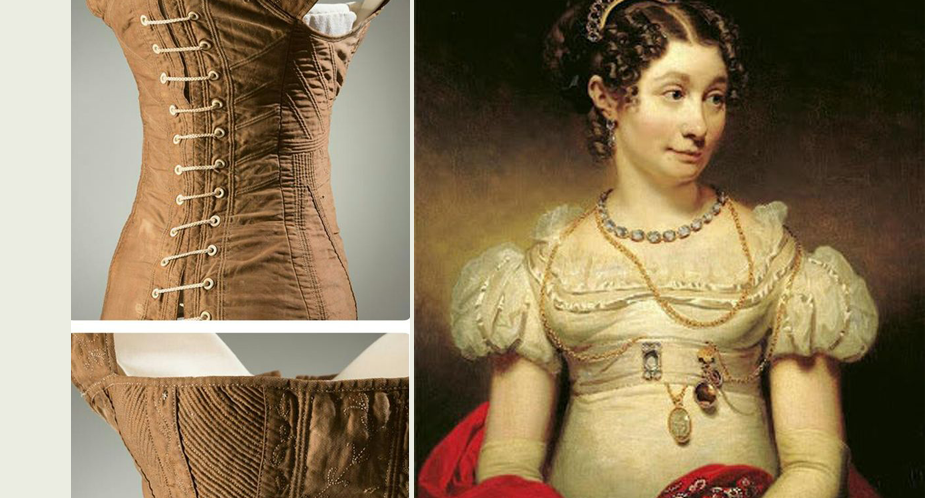

…became fuller in overall shape at the top, and took on a molded, shaped basque area below the waist. (1815 approx long molded corset and the silhouette it created as shown in a royal portrait)
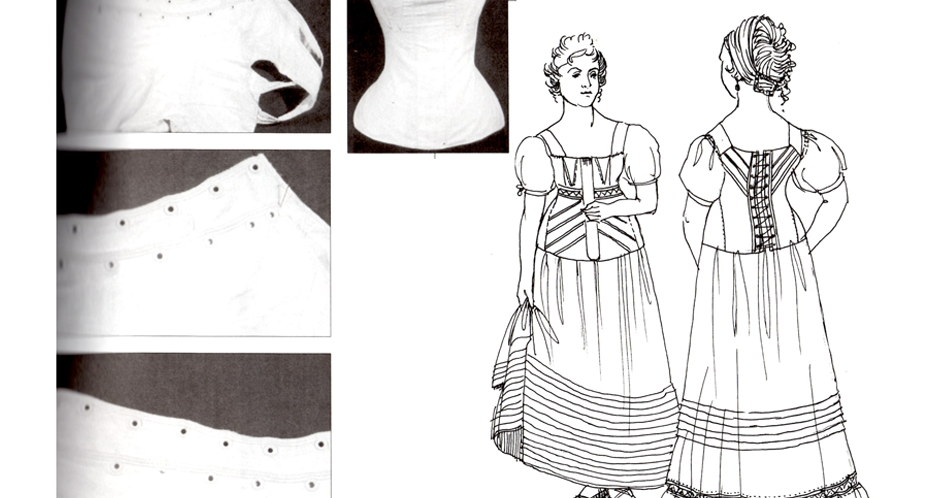
…visually reduce the waist size so the newer silhouette gave the wearer the appearanc e of having a tiny waist. It was this shift in proportion that would lead to tight lacing for the rest of the century. (Sketch and photos: 1827-1830 corset starts to shape the waist)
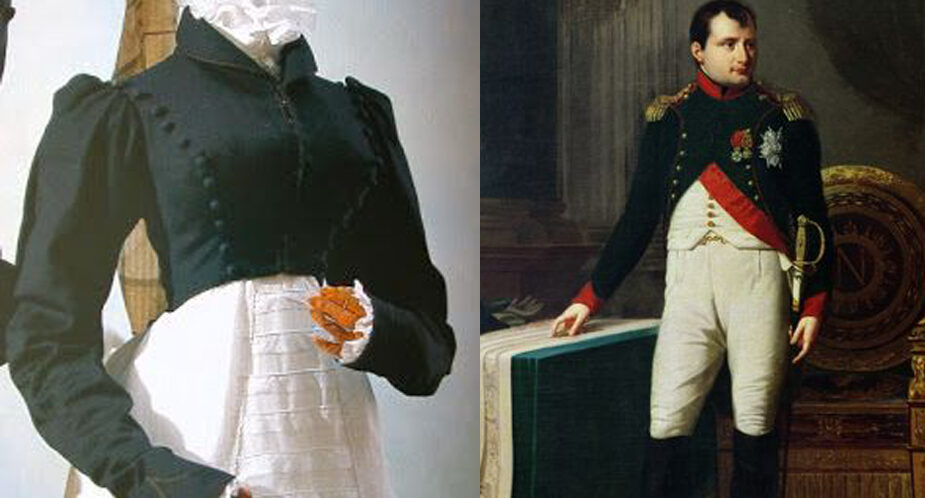
…and rows of braid and epaulettes were copied into women’s fashion of the 1820’s, and began to influence the silhouette, which of course demanded a new shape to the undergarments. (Extant: woman’s 1820’s Spencer jacket and Napoleon Bonaparte of France in military uniform, 1809) More examples of women’s military inspired …
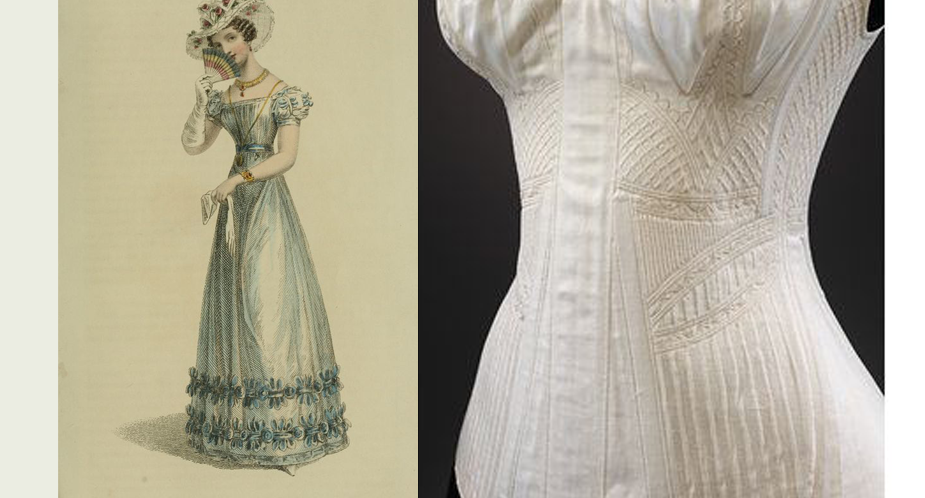
…ladies began to fashion quilted bodies with a slight re-enforcement from whale baleen to assist in developing the new shape of an extended skirt, lowering of the waistline, and a gradual widening of the upper sleeve. (Sketch: Ackermann’s Repository Fashion plate 1825; Extant 1825-1835 handmade corset)
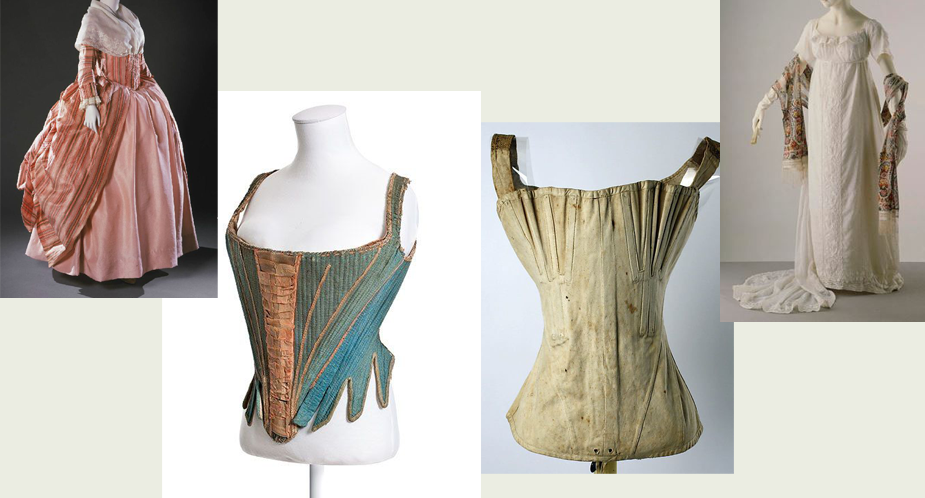
…early and mid periods was in strong contrast to the 18th century. The Regency silhouette became long and elegant with little reference to width. As the early Regency turned to later Regency, the dress became stiffer and wider, and the silhouette required a change in understructure. (Extant: 1780’s vs 1810’s. …
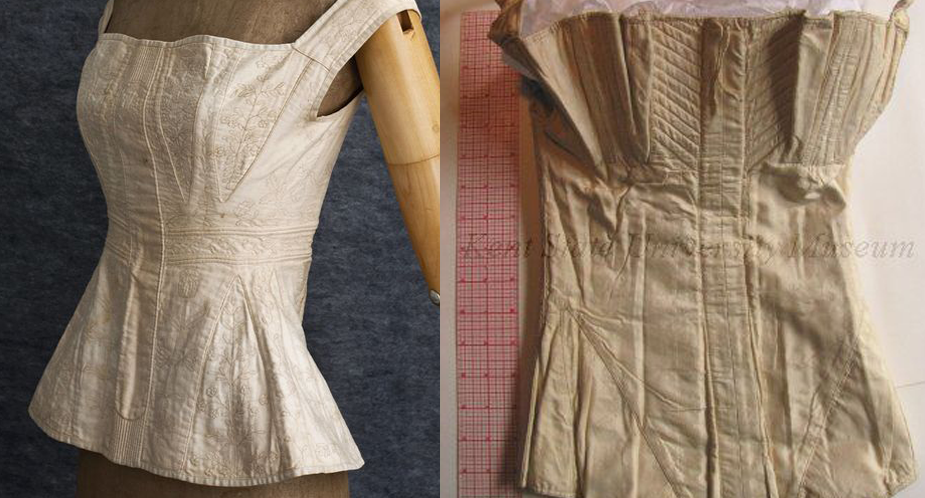
…while the dress was still slender, this “bodice” was still far along on the hips, but it decreased in length as the skirt increased in fullness. By the middle of the 19th century, the bodice or corset became very short. (Extant: 1812 wedding corset and 1815 approximate corset were still …
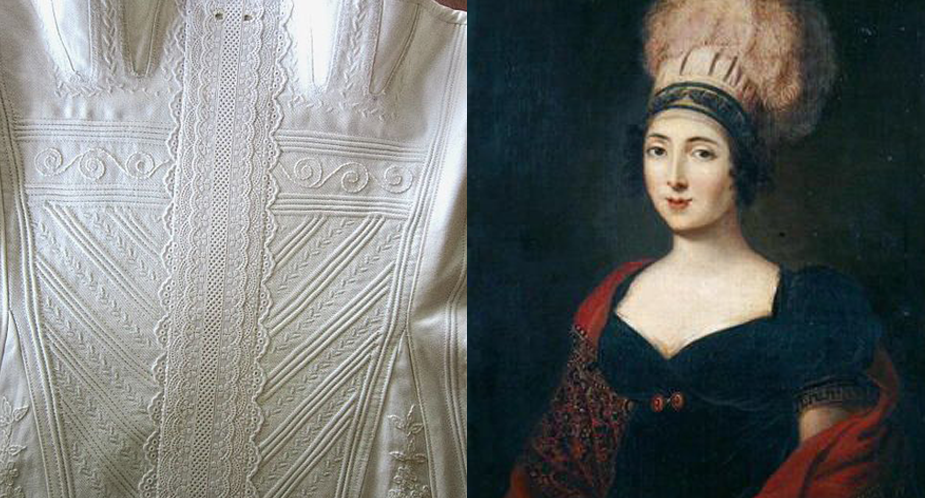
…the waist gradually lengthened in the dress design and dropped towards the normal waist position, the corset lengthened too and became more defined. Extra side pieces were added for control and shaping. (1810’s reproduction corset and portrait about 1812-1815 showing the new longer shaping with more structure)

Please note that we have a VERY secure and private server that is often spammed, and almost always spammed by school email addresses. If you do not get an email response within 10 hours, please check your spam box. https://silhouettescostumes.com/the-eras-we-build/introduction-to-eras/ Also please note as written on the internal linked page …
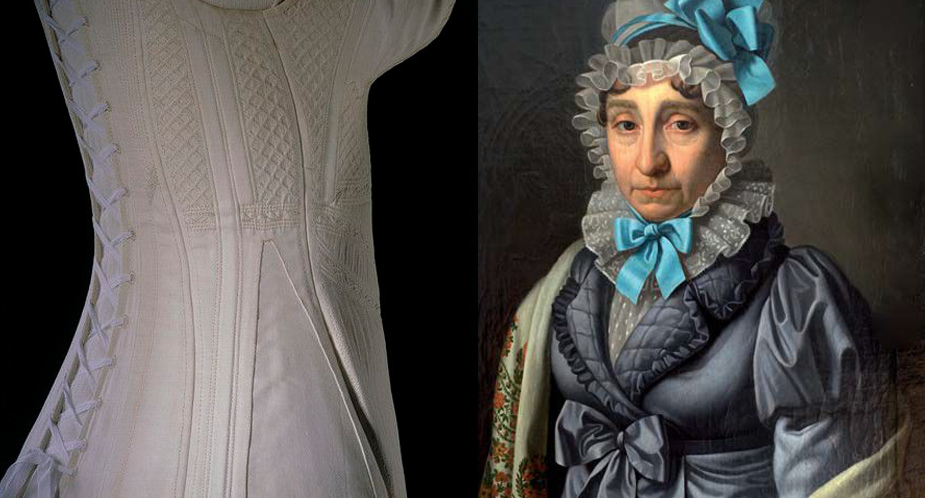
…roundness was now given to the bust by inserting two or more gussets on each side of the hips, and two or more gussets/gores in the bust. The idea was to create roundness and to lift the breasts. (Portrait & Extant Stays example 1815: old or young, the objective using …
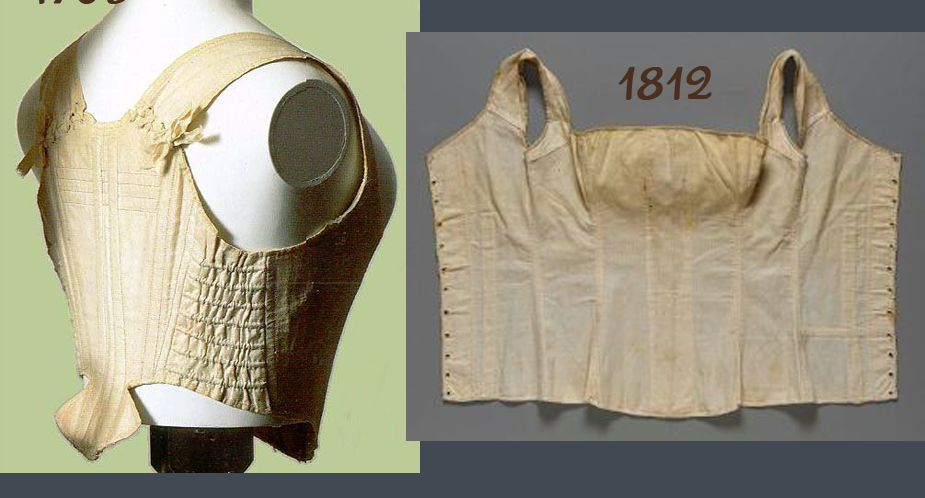
(See the preceding history of Stays 1740-1780 and Corsets 1780-1880) Late Regency – A Shape that would Stay.. without Stays Beginning in about 1810, the new corset began from a simple body bodice made of a strong cotton material called “jean” which would later be known as “coutil” or “couteil”. …